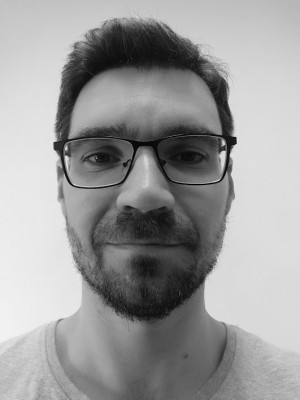abstract
The interaction of six tripodal synthetic chloride transmembrane transporters with a POPC bilayer was investigated by means of molecular dynamics simulations using the general Amber force field (GAFF) for the transporters and the LIPID11 force field for phospholipids. These transporters are structurally simple molecules, based on the tris(2-aminoethyl) amine scaffold, containing three thiourea binding units coupled with three n-butyl (1), phenyl (2), fluorophenyl (3), pentafluorophenyl (4), trifluoromethylphenyl (5), or bis(trifluoromethyl) phenyl (6) substituents. The passive diffusion of 1-6 superset of Cl- was evaluated with the complexes initially positioned either in the water phase or inside the bilayer. In the first scenario the chloride is released in the water solution before the synthetic molecules achieve the water-lipid interface and permeate the membrane. In the latter one, only when the chloride complex reaches the interface is the anion released to the water phase, with the transporter losing the initial ggg tripodal shape. Independently of the transporter used in the membrane system, the bilayer structure is preserved and the synthetic molecules interact with the POPC molecules at the phosphate headgroup level, via N-H...O hydrogen bonds. Overall, the molecular dynamics simulations' results indicate that the small tripodal molecules in this series have a low impact on the bilayer and are able to diffuse with chloride inside the lipid environment. Indeed, these are essential conditions for these molecules to promote the transmembrane transport as anion carriers, in agreement with experimental efflux data.
keywords
AMBER FORCE-FIELD; SYNTHETIC MEMBRANE TRANSPORTERS; ANION RECEPTOR CHEMISTRY; BIOMOLECULAR SIMULATIONS; LIPID-BILAYERS; HIGHLIGHTS; CHANNELOPATHIES; VALIDATION; CHANNEL; MODEL
subject category
Chemistry; Materials Science; Physics; Polymer Science
authors
Marques, I; Colaco, AR; Costa, PJ; Busschaert, N; Gale, PA; Felix, V
our authors
Projects
acknowledgements
This work was financially supported by QREN-FEDER, through the Programa Operacional Factores de Competitividade COMPETE and National Funds through FCT - Fundacao para a Ciencia e a Tecnologia under project PTDC/QUI-QUI/101022/2008 and the CICECO PEst-C/CTM/LA0011/2013 programme. IM thanks the FCT for the PhD scholarship SFRH/BD/87520/2012. PJC acknowledges project New Strategies Applied to Neuropathological Disorders (CENTRO-07-ST24-FEDER002034), co-financed by QREN, Mais Centro-Programa Operacional Regional do Centro e Uniao Europeia/Fundo Europeu de Desenvolvimento Regional. NB thanks the University of Southampton and A*STAR for a postgraduate scholarship. PAG thanks the Royal Society and the Wolfson Foundation for a Royal Society Wolfson Research Merit Award.





